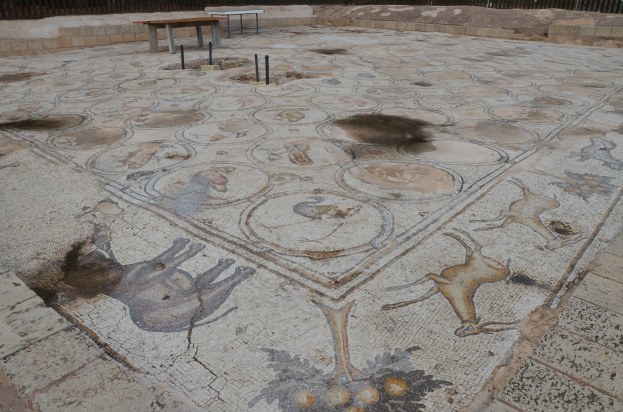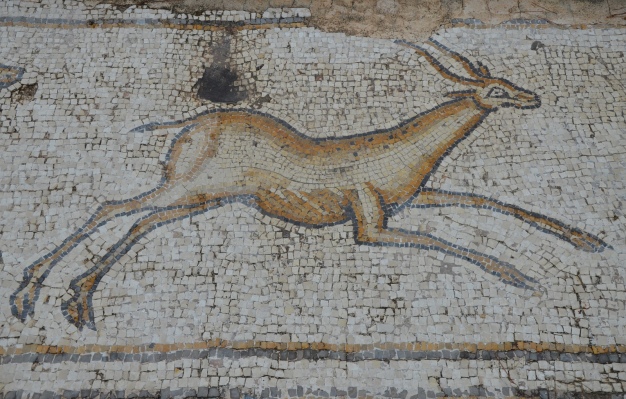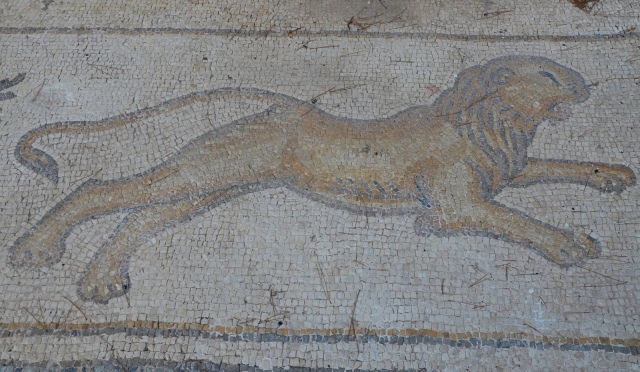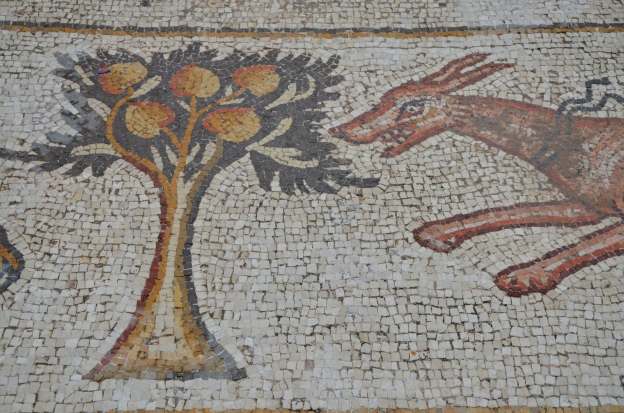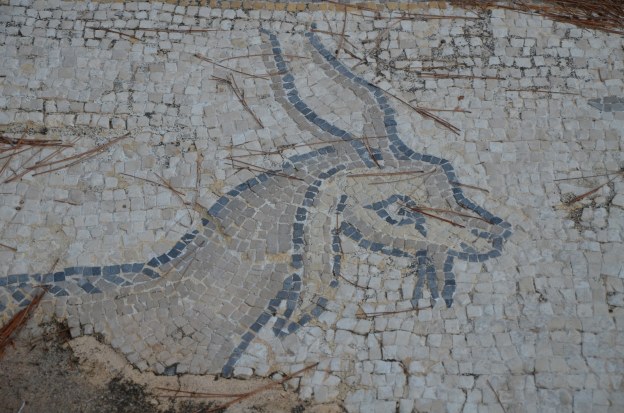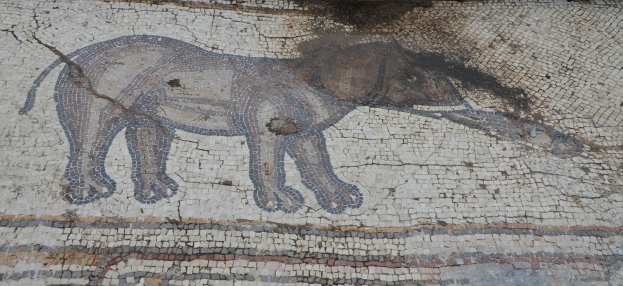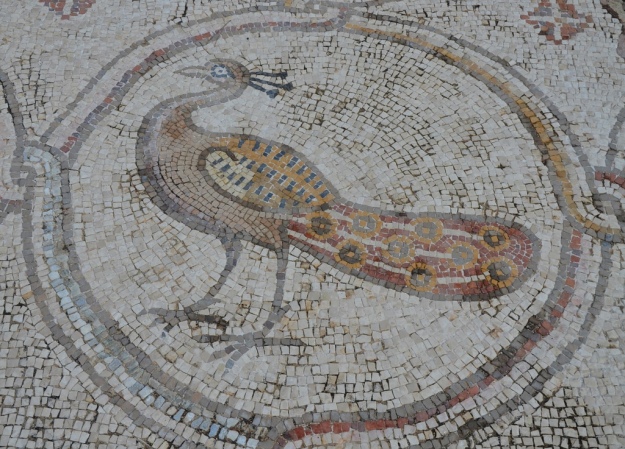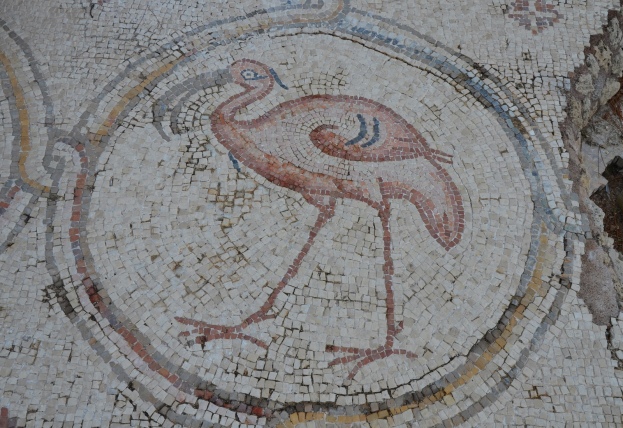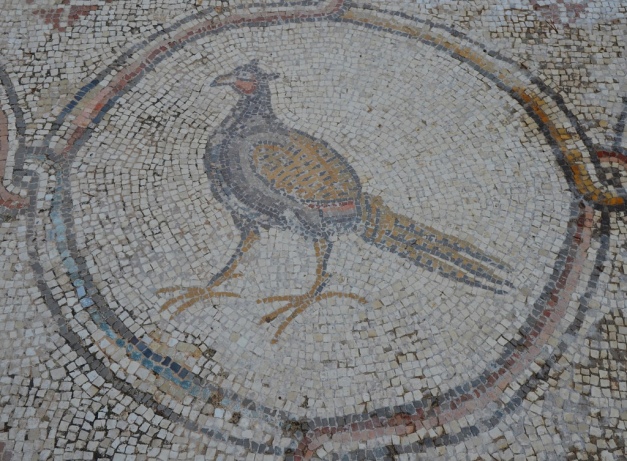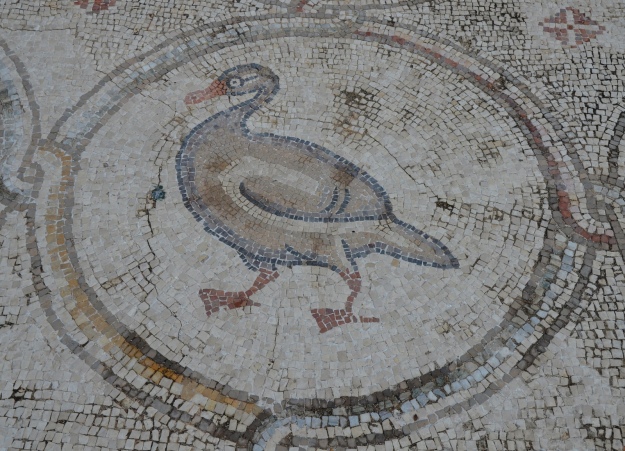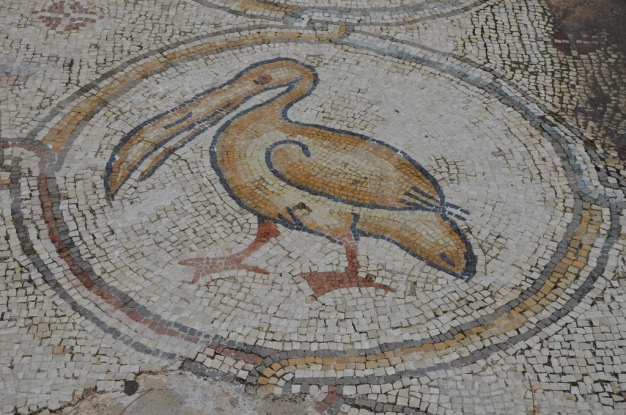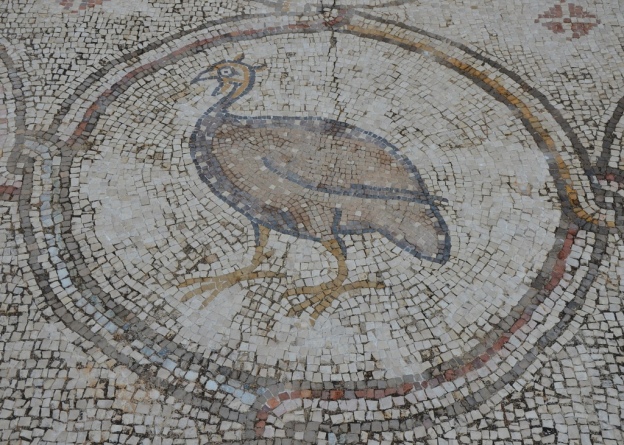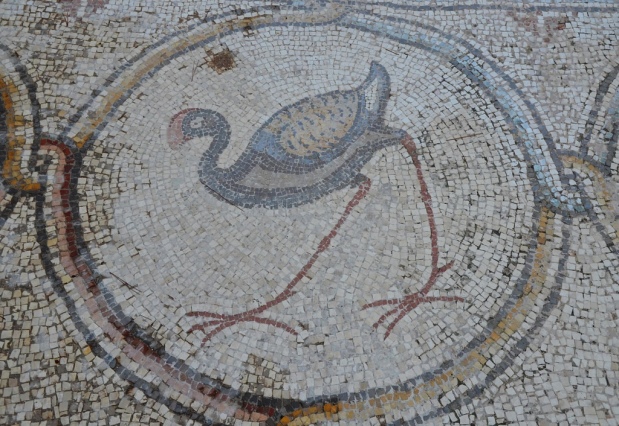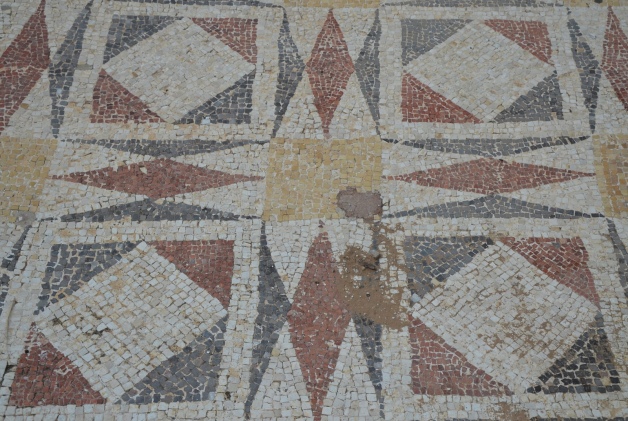A stunning mosaic floor referred to as the “Bird Mosaic” was uncovered by accident in 1955 on the outskirts of Caeserea in Israel, outside the walls of the ancient settlement. With no budget available for its preservation, it was covered over again until the Israel Antiquities Authority and the Director of the Caesarea Antiquities Preservation project decided in 2005 to preserve the unique find and to reveal it to the public. Lying in situ, the Bird Mosaic offers a rare glimpse into the lives of a wealthy Byzantine-era Caesarean who commissioned this ancient work of art.
During the excavations of 2005 archaeologists determined that the ‘Bird Mosaic’ was part of a Byzantine palace complex dating from the 6th century AD. During the Byzantine period, the harbour city of Caesarea flourished and expanded as much as 800 m inland. This palace complex, covering an area of nearly 1 acre (4,000 sq. meters), was probably owned by a reputable and wealthy family. The “Bird Mosaic” adorned the floor of a large open courtyard, the atrium, with a portico along the western and southern sides.
The wide border of the mosaic pavement portrays wild and tame animals separated by fruit trees, bordering 120 round medallions arranged in 12 rows and 10 columns.
Each of the 120 medallion contains a bird, hence the name given to the mosaic. Eleven different species are represented, appearing several times, in an unusual arrangement of diagonal lines descending from right to left. Each diagonal line depicts the same bird. The birds include, flamingo, duck, peacock, partridge, guineafowl, ibis, goose, pheasant and pelican. Some other birds appear to be fanciful.
During the 2005 excavations of the Bird Mosaic, a few adjacent rooms were also exposed. These rooms are paved with mosaics with geometric and floral motifs.
Fragments of other mosaic pavements as well as pieces of plaster and roof tiles were found over the intact floors of the ground level, indicating the villa was a two storey building. One room contained fragments of a dazzling glass mosaic panel glowing with gold. It is believed to be the only one of its kind in the world. The nearly intact panel, also known as the “gold-glass table”, was found face down on the mosaic floor under a layer of ash and debris from the ceiling and the second floor. It is made of small glass pieces using the opus sectile technique. Experts believe the glass panel covered the surface of a wooden sigma table, burnt when the building was destroyed. The quality of its preservation is remarkable and its craftsmanship indicates Christian origins. To read more about the glass panel and see images of it, check this page.
The “Bird Mosaic Palace” is believed to have been destroyed during the Arab conquest in the 7th century.
The Bird Mosaic is located a short drive north of the Caesarea National Park. It is clearly signposted, on the way to the famous aqueduct along the beach.
Originally published at Following Hadrian
